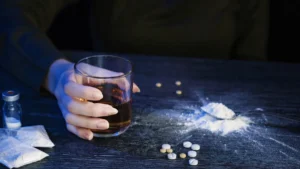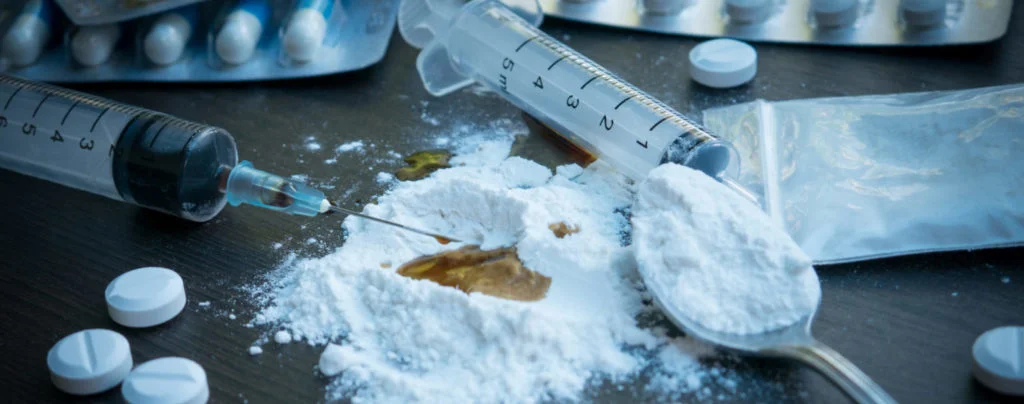Are you or someone you care about juggling the use of multiple substances? Polysubstance abuse isn’t just about using more than one drug; it complicates recovery and increases health risks significantly. It can be a tangled web of interactions that magnifies danger and confusion.
In this blog, we’re diving into what polysubstance addiction really is, spotting the signs, understanding the dangers, and uncovering the best approaches to treatment. Whether you’re seeking help for yourself or trying to support someone else, understanding these complexities is a critical step toward recovery. Let’s explore how to tackle this challenging situation and find effective paths to healing.
Contents
Understanding Polysubstance Abuse
 Polysubstance abuse occurs when an individual uses more than one type of drug either simultaneously or at different times. Unlike single-substance addiction, where dependence or abuse centers around one particular substance, polysubstance abuse involves the complex interplay of multiple drugs, which can complicate both the effects on the body and the approach to treatment.
Polysubstance abuse occurs when an individual uses more than one type of drug either simultaneously or at different times. Unlike single-substance addiction, where dependence or abuse centers around one particular substance, polysubstance abuse involves the complex interplay of multiple drugs, which can complicate both the effects on the body and the approach to treatment.
Complexity of Multiple Drug Use:
- Interactions and Effects: When different substances are mixed, they may interact in unpredictable ways, enhancing each other’s effects dangerously or counteracting one another. For example, combining stimulants and depressants can strain the body as it tries to cope with opposing forces.
- Varying Effects: Each drug may have a different set of effects and withdrawal symptoms, which can overlap or exacerbate one another, creating a complex clinical picture that can be challenging to diagnose and treat.
Signs of Polysubstance Addiction
 Identifying polysubstance addiction can be challenging due to the varied effects of different drugs used. However, recognizing the signs across behavioral, physical, and psychological dimensions is crucial for timely intervention. Here are the key indicators to look out for:
Identifying polysubstance addiction can be challenging due to the varied effects of different drugs used. However, recognizing the signs across behavioral, physical, and psychological dimensions is crucial for timely intervention. Here are the key indicators to look out for:
Behavioral Signs:
- Erratic Behavior
- Increased Secrecy
- Social Withdrawal
- Neglecting Responsibilities
- Financial Issues
Physical Signs:
- Noticeable decline in personal grooming or physical health.
- Alternating periods of high energy and lethargy, which reflect the varying effects of stimulants and depressants.
- Unusual sleep patterns
- Depending on the substance, symptoms can include weight loss, nosebleeds, track marks, dilated or constricted pupils, and frequent sickness.
Psychological Signs:
- Mood swings
- Increased anxiety or paranoia
- Difficulty concentrating
- Memory problems
- Confused thinking
- Depression
Detection Challenges: The detection of polysubstance abuse is complicated by the varying effects of the drugs involved. The contradictory symptoms can mask each other or create a confusing clinical picture, making it hard to identify the root cause of changes in behavior, health, or mood. This complexity underscores the need for comprehensive assessment and screening to accurately diagnose and treat polysubstance addiction effectively.
Why People Engage in Polysubstance Abuse
Individuals may turn to polysubstance abuse for a variety of reasons. Here are some common reasons why people might use multiple drugs:
- To enhance or prolong the effects of one drug with another, seeking a more intense high.
- Mitigate the undesirable effects of another, such as using a depressant to ease the come-down from a stimulant.
- Curiosity and the desire to experience different effects
- Sometimes, the choice of substance is influenced by what’s available at the moment, leading to the use of multiple drugs.
- Peer pressure or social contexts
- People may use different substances to cope with mental health issues, physical pain, or emotional distress, each drug addressing different symptoms.
- As tolerance to the effects of one drug builds, users might add more substances to achieve the desired effect.
- Psychological issues, including stress, trauma, or anxiety, might lead individuals to seek relief through various drugs.
Addressing these factors through comprehensive assessment and tailored interventions is essential in helping individuals overcome polysubstance abuse and achieve lasting recovery.
Effective Treatment Strategies for Polysubstance Addiction

Treating polysubstance abuse requires a multifaceted approach tailored to address the complex nature of addiction to multiple substances. Here are the most effective strategies to consider when treating someone dealing with polysubstance abuse:
Detoxification Processes
- Supervised Detox: Medical supervision during detox is crucial, as withdrawal symptoms can be severe and vary depending on the substances used. Medical professionals can provide medications to ease withdrawal symptoms and ensure patient safety.
Behavioral Therapies
- Cognitive Behavioral Therapy (CBT): Helps patients understand the thoughts and behaviors that lead to substance use and teaches them how to change these patterns.
- Dialectical Behavior Therapy (DBT): Particularly effective for individuals with emotional dysregulation or personality disorders; focuses on building skills to manage stress, regulate emotions, and improve relationships.
- Motivational Interviewing (MI): Increases an individual’s motivation to change and make positive decisions about their substance use.
Medication-Assisted Treatment (MAT)
- FDA-Approved Medications: For opioid addiction, medications such as buprenorphine or methadone may be used to manage withdrawal symptoms and cravings. Other medications may be prescribed to address symptoms related to other substances.
- Integrated Medication Approach: Physicians may design a regimen that addresses the withdrawal symptoms from multiple drugs, tailored to the individual’s specific needs.
Support Systems
- Peer Support Groups: Groups such as Alcoholics Anonymous (AA) or Narcotics Anonymous (NA) provide ongoing support and fellowship, crucial for long-term recovery. These groups help individuals feel less isolated in their struggles.
- Family Therapy: Engaging the family in therapy can improve treatment outcomes by healing relationships and building a supportive home environment.
Holistic Approaches
- Nutritional Counseling and Physical Wellness: These can improve overall health and help the body recover from the effects of substance abuse.
- Mindfulness and Stress Management Techniques: Practices like yoga, meditation, and mindfulness can help reduce stress and increase mental clarity, supporting recovery.
Effective treatment of polysubstance abuse often requires a combination of these strategies to address the unique challenges posed by multiple substance dependencies. With comprehensive and integrated treatment, individuals can achieve a sustained recovery.
Conclusion
If you or someone you care about is struggling with polysubstance abuse, you don’t have to face this alone. At QuitMantra, we understand the intricacies of treating this form of addiction and offer a range of services designed to support each step of the recovery process.
We encourage you to visit our website and explore the various treatment options we provide. Whether you’re considering starting your recovery journey with a trial therapy session or looking to join a comprehensive deaddiction program, QuitMantra is here to support you. Book your session today and take the first step towards a healthier, substance-free life. Your path to recovery starts here.

